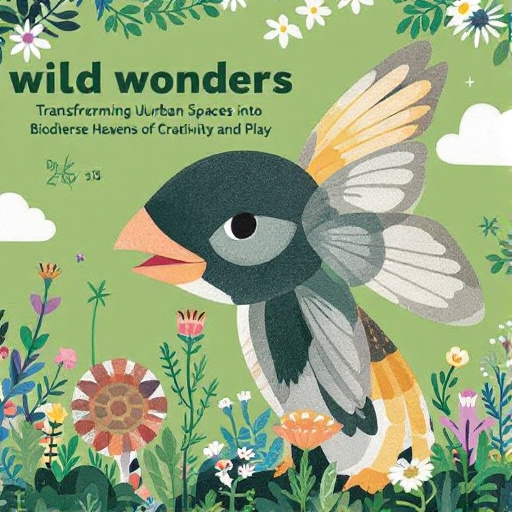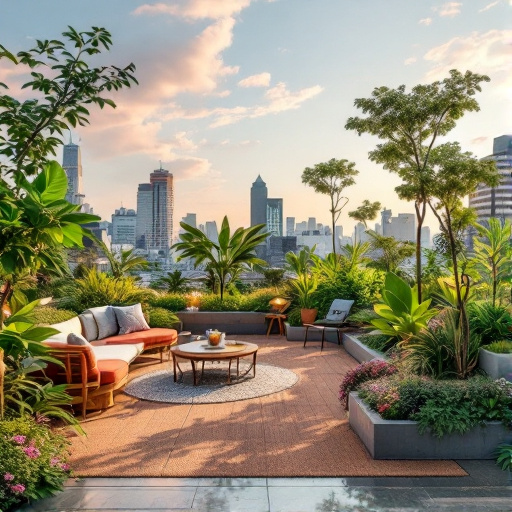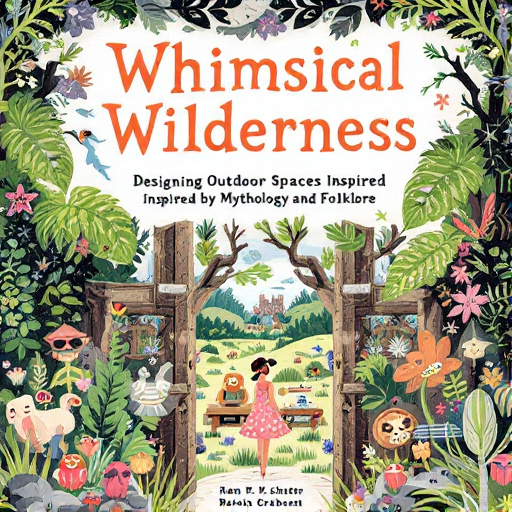Featured Articles
- Blending Nature and Nostalgia: Designing Outdoor Spaces Inspired by Forgotten Childhood Playgrounds
- Rewilding Urban Landscapes: Transforming Concrete Jungles into Biodiverse Outdoor Sanctuaries
- Rewilding Urban Spaces: Designing Outdoor Retreats Through Nature's Chaotic Beauty
- Unconventional Outdoor Oasis: Transforming Urban Rooftops into Lush Green Retreats for Mindful Living
- Whimsical Wilderness: Crafting Playful Outdoor Spaces that Spark Joy and Imagination
Whimsical Wilderness: Designing Outdoor Spaces Inspired by Mythology and Folklore
Whimsical Wilderness: Designing Outdoor Spaces Inspired by Mythology and Folklore
In an era increasingly dominated by urban environments and technology, the charm of designing outdoor spaces inspired by mythology and folklore brings a refreshing escape to our lives. By incorporating these elements into gardens, parks, and public spaces, we not only create whimsical surroundings but also invite stories to bloom alongside the flora.
The Allure of Mythology and Folklore
Mythology and folklore have been central to cultures across the globe for centuries. They serve as windows into the past, allowing us to explore human experiences through tales of gods, heroes, and fantastical creatures. According to a study by the University of Edinburgh, approximately 80% of people believe that traditional stories influence their understanding of justice and morality, showcasing the profound impact these tales can have on our social structures.
Transformative Spaces: Case Studies
Let’s delve into how different regions have tapped into mythological themes to create transformative outdoor spaces. One notable example is the Enchanted Forest theme park in Oregon, a magical haven that features character-driven attractions inspired by fairy tales and folklore. Visitors can embark on a journey through whimsical landscapes adorned with whimsical castles, troll bridges, and fairy houses, embodying the essence of stories that span generations. This park has reportedly attracted over 200,000 guests each year, emphasizing the universal appeal of story-driven spaces.
Nature and Narrative: The Psychological Benefit
Integrating narrative elements into outdoor environments can significantly enhance our emotional and psychological well-being. A study published in the journal Environmental Psychology emphasizes that spaces that evoke narratives stimulate imagination and foster social interaction, which can improve mental health outcomes. By designing gardens that tell stories—like a grove dedicated to woodland spirits or meandering paths that echo the journeys of ancient heroes—we create places for reflection, conversation, and connection.
Humor & Whimsy: Lightening Up Landscape Design
Now, let’s get a little whimsical! Imagine a garden where garden gnomes are not just kitschy decorations but the mischievous avatars of ancient trickster gods. Picture a hedgehog-shaped topiary that pays homage to the folklore of the hedgehog as a symbol of protection in various cultures. Who wouldn't chuckle at the sight of these cheeky characters? Such elements encourage laughter and lighten the visitor's heart, reminding us that nature, like human life, is best enjoyed with a bit of humor.
Designing Your Own Whimsical Wilderness
So, how can you transform your outdoor spaces into a whimsical wilderness inspired by mythology and folklore? Here are some tips: Start small; perhaps create a fairy garden as a weekend project. Incorporate native plants that resonate with your chosen mythos—does your local folklore speak of a certain tree or flower? Invite seasonal changes into your design so the space narrates evolving stories throughout the year.
Architectural Elements: Building with a Story
Another approach is to incorporate architectural features that resonate with mythological references. If you live near a body of water, a gazebo designed to resemble a nymph’s dwelling can create a stunning focal point, inviting both relaxation and storytelling. Such structures could be made from reclaimed wood—considered in many cultures as a symbol of ecosystem rejuvenation—creating beauty with purpose.
A Tree Dedicated to Legends
Let’s say you want to elevate your backyard by planting a tree steeped in myth. For instance, a sycamore tree is dubbed the “Tree of Life” in various cultures and symbolizes endurance. By dedicating space around this tree for storytelling or meditation, you invite visitors to engage with the powerful narratives embedded in nature. Statistics show that outdoor activities can boost mood by up to 60%, proving that these enhancements can elevate more than just aesthetics.
Pavements, Pathways, and Mysterious Trails
Imagine winding pathways edged with stones inscribed with quotes from your favorite myths or folklore. These paths can lead to various thematic areas—a labyrinth that narrates the tale of Theseus and the Minotaur, or a small pond where a fairy tale about water sprites unfolds. Not only do these features create visual intrigue and a sense of adventure, but they also prompt plenty of discussions about the stories and their meanings.
Encouraging Community Engagement
Why not take it a step further? Design spaces that double as communal gathering points. An amphitheater that draws inspiration from ancient Greek theater could host storytelling events or poetry readings. Community gardens adorned with totemic art inspired by diverse folklore can serve educational purposes, promoting cultural awareness and heritage preservation. Engaging with locals can ignite a sense of pride and participation in these narrative-driven spaces.
Your Whimsical Wonderland: Timeless Nostalgia
There’s something enchanting about creating spaces that resonate with nostalgia. Gardens inspired by childhood stories, such as those from The Brothers Grimm, can take an adult back to simpler times while introducing younger generations to the joys of literature. A study conducted by the American Psychological Association found that nostalgic experiences can lead to greater feelings of representation and belonging, enhancing one’s sense of community and identity.
Challenges and Considerations
While crafting your mythical sanctuary can be thrilling, there are challenges to consider. Regulations may apply to landscaping projects, particularly in public or community-owned spaces. Furthermore, sustainable practices must be considered—attracting local wildlife without disrupting ecosystems requires a balanced approach. Always conduct research before diving in, ensuring that your whimsical designs don’t inadvertently harm local flora and fauna.
Tips for Sustainable Mythical Landscapes
Consider integrating native plants that tell stories of the land. Choose drought-resistant varieties to conserve water, or build habitats for local wildlife. “The National Wildlife Federation states that using native plants can lead to more resilient landscapes, while also supporting local species of pollinators, birds, and beneficial insects,” making ethical choices while maintaining the charm of folklore truly possible.
Final Thoughts on Whimsical Wilderness
As we immerse ourselves in the art of design, let us not forget the timeless tales that can inspire our outdoor spaces. By merging mythology, folklore, and the natural world, we cultivate not only beauty but also meaning and connection in our lives. And who knows? Perhaps the next time you find yourself wandering through your whimsical wilderness, you may just hear a whisper of the past echoing through the leaves, transporting you to a time filled with magic and mystery.




